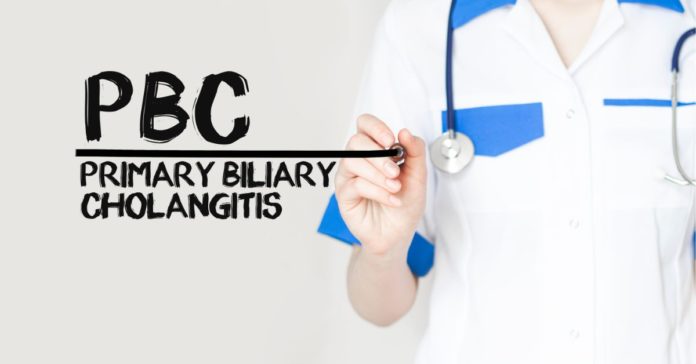Primary biliary cholangitis is a disease that occurs when bile ducts in the liver get damaged. It is also known as primary biliary cirrhosis. When the bile ducts get damaged, the bile starts building up in the liver. Over time, the accumulation of bile leads to liver damage. As a result, permanent scarring and cirrhosis can happen. New treatments are being introduced that work to enhance the outlook for people with primary biliary cholangitis.
About primary biliary cholangitis
Primary biliary cholangitis is a chronic disease that destroys the bile ducts progressively in your liver. Bile is a fluid in the liver that helps in digestion and absorbing certain vitamins. Moreover, it also assists in getting rid of cholesterol, worn-out red blood cells, and toxins.
This disease affects both sexes but primarily women. There are four stages of primary biliary cholangitis based on how much the liver is damaged. The first stage includes inflammation and damage of walls of medium-sized bile ducts.In the second stage, the smaller bile ducts get blocked. In stage three, scarring begins and in the fourth stage, cirrhosis develops which is permanent and leads to severe scarring and liver damage.
What are the symptoms?
It develops slowly and sometimes people may not have symptoms for years even after being diagnosed. The early symptoms include fatigue, dry mouth and eyes, and itchy skin. However, as it progresses, the succeeding symptoms may include:
- Pain in the upper right abdomen
- Enlargement of the spleen
- Darkening of the skin
- Loss of appetite
- Dry eyes and mouth
- Nausea
- Weight loss
- Small white or yellow bumps under skin or eyes
- Jaundice
- Swollen legs and ankles
- Fractures due to weakened bones and osteoporosis
- Joint, bone, or muscle pain
- Swollen abdomen
- Brittle and weak bones (osteoporosis) that can lead to fractures
- High cholesterol
- Diarrhea, which might include greasy stools
- Underactive thyroid
What are the causes of primary biliary cholangitis?
It is an autoimmune disease, which means the immune system mistakenly considers the tissues in your liver as a foreign invader and therefore starts attacking it. The cause behind this immune system attack is unknown. But it is most likely triggered by genetic and environmental causes. Being female increases the chances of developing primary biliary cholangitis. The other risk factors include
- Having a parent or sibling with primary biliary cholangitis
- Smoking cigarettes
- People aged between 30 and 60
- Exposure to certain chemicals
- Infections
When to see a doctor?
If you are experiencing any worrying aforementioned signs or symptoms, consult a doctor. On the other hand, if you have been diagnosed with primary biliary cholangitis, you can see a doctor with expertise in disorders of the digestive system or liver diseases.
Call 1860-500-1066 to book an appointment
Prevention
While you may not be able to prevent primary biliary cholangitis, you can slow down the progression of this disease. Making lifestyle changes by following a healthy diet and avoiding smoking and alcohol consumption will help . Consult your doctor regularly so they can monitor your liver function closely.
What are the treatment options for primary biliary cholangitis?
There is no cure for Primary Biliary Cholangitis at present. However, some treatment options can mellow your symptoms down and protect your liver from getting damaged further.
- Ursodeoxycholic Acid (UDCA): It is the main treatment for Primary Biliary Cholangitis. It helps in preventing or delaying liver damage in most people. It is most effective when taken in the early stages. However, it does not do much in improving itchiness or fatigue. Treatment is usually lifelong.
- Obeticholic Acid: It is used for people who cannot tolerate UDCA or their body does not respond to it. This medicine helps in lowering the amount of bile in the liver by decreasing bile production and pushing bile out of the liver.
- Fibrates: When taken with UDCA, it has reduced liver inflammation and itching in some people.
- Budesonide: When combined with UDCA, the corticosteroid budesonide may be of potential benefit for primary biliary cholangitis.
- Other treatments : For itching, your doctor can prescribe antihistamines. Further, artificial tears can be prescribed for dry eyes and saliva substitutes for dry mouth. Supplements can be taken by people who have become deficient in fat-soluble vitamins.
- Liver Transplant: If your liver has become severely damaged and cannot function properly, you will require a liver transplant. The surgery will replace your liver with a healthy liver from a donor.
Conclusion
Primary biliary cholangitis is chronic, progressive, and is incurable. It can result in permanent liver damage over time. However, better treatment options are now available that can improve the outlook for people and have a normal life expectancy. Following the treatment prescribed by your doctor can help control progression.
Frequently Asked Questions (FAQs)
Can I pass on primary biliary cholangitis?
Primary biliary cholangitis is not contagious. However, you can pass it on through genetic predisposition to your children.
How quickly does primary biliary cholangitis progress?
Generally, primary biliary cholangitis progress to terminal stages over the time span of 15 to 20 years. But, the rate of progression may vary.
What is AMA?
AMA means Antimitochondrial Antibody. It is the diagnostic tool for primary biliary cholangitis with a 95% accuracy.


















